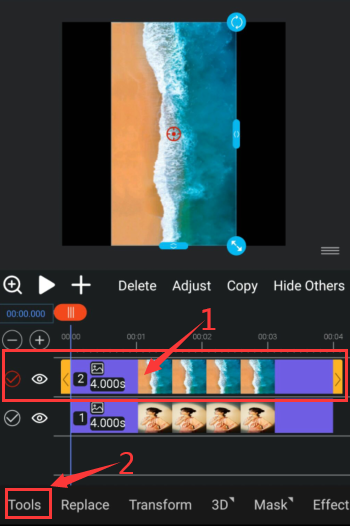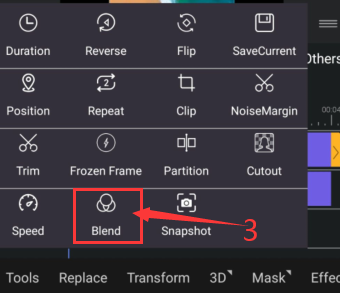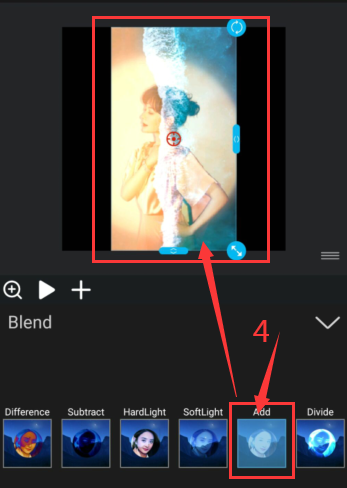Blending modes
1. Work with layer blending modes
Blending modes for layers control how each layer blends with or interacts with layers beneath it.
You can’t directly animate blending modes by using keyframes. To change a blending mode at a specific time, split the layer at that time and apply the new blending mode to the part of the layer that continues.
Each layer has a blending mode, even if that blending mode is the default Normal blending mode.
To apply a blending mode to selected layers,click Toolbox> Blend, and click Add suitable blend mode.



